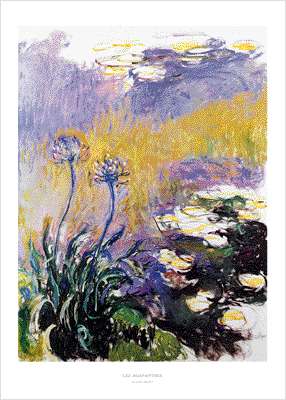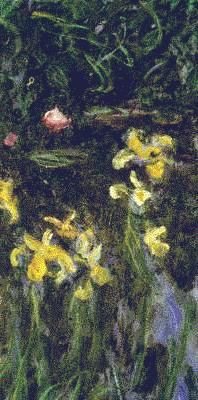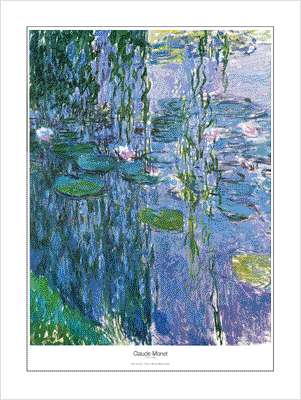
|
Back |
 Home
Home
|
|
Impressionism
"I am pursuing a dream - I want the impossible. Other painters paint a bridge, a house, a boat. They paint the bridge, the house or the boat, and they are done....I should like to paint the atmosphere enveloping the bridge, the house or the boat. The beauty of the mood they are in and that is no less than impossible." - Claude Monet |
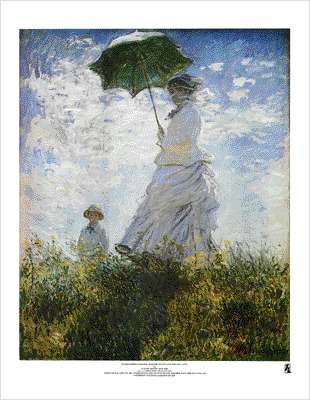
|

|
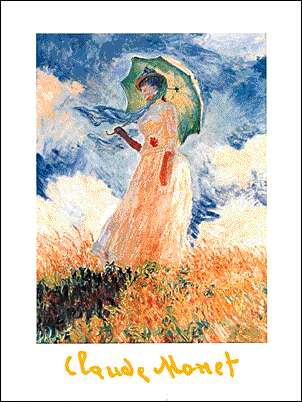
|
|
Just like their Japanese counterparts, French Impressionist painters also depended on the processes of grouping and filling in. Grouping and filling in are two ways in which the human mind perceptually organizes figure/ground perceptions from separate elements. Fragments come together to form a perfectly unified scene; "real meadows and rivers in the sun." But "the statements that compose them are enigmatic in themselves. They are the simplest dabs of paint that a brush can make which cannot imitate a single leaf or ripple." (Lawrence Gowing). These single patches of color have such a startling immediacy and independence that they resist being used as a representational means. They resist "likeness". Their tendency is to remain as visible strokes of paint, as fragments floating forward to the surface of the picture, detached from all the organizing, focusing, combining and separating activities that are essential to representation. Our enjoyment of these paintings now makes it easy tooverlook the violent asssault that Impressionism represented on contemporary modes of perception in act. It can only be concluded through assumption, the real sense of fragmentariness and incoherence, how difficult it was to "read" these pictures, in what seemed like a chaos of fragments of color.
Art should not always be an imitation of life. If that were so, art would lose its purpose. Impressionism is a form of art which is highly individualistic of the artist or artists.This is where Non-photorealistic Rendering and Impressionism cross paths. NPR brings an individualism to CG art by transcending conventional CG. Impressionism is by far the best example of NPR through the ages. 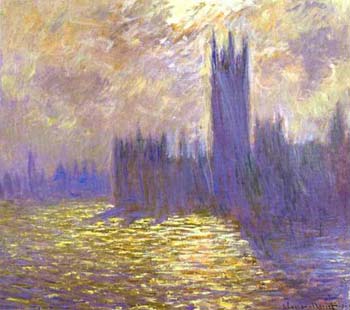 Claude Monet. Thames: Parliament
Claude Monet. Thames: ParliamentAmplification through Simplification Impressionism gives the viewer a sense of right through identifying key visual elements. The poet Jules Laforgne in October 1883 wrote perceptively about the constant state of flux hovering between interpretations, even of the disorientation that the painter experiences, "everything is obtained by a thousand little strokes in every direction like straws of color - all in vital competition for the whole impression.... Subject and Object are then irretrievably in motion, inapprehensible and unapprehending. |
(Move cursor over the site-map to bring up info-panels. The large boxes are links.)
| Why use NPR? |

|
Non-Photorealistic Rendering |
|
Aesthetics, Impact |
